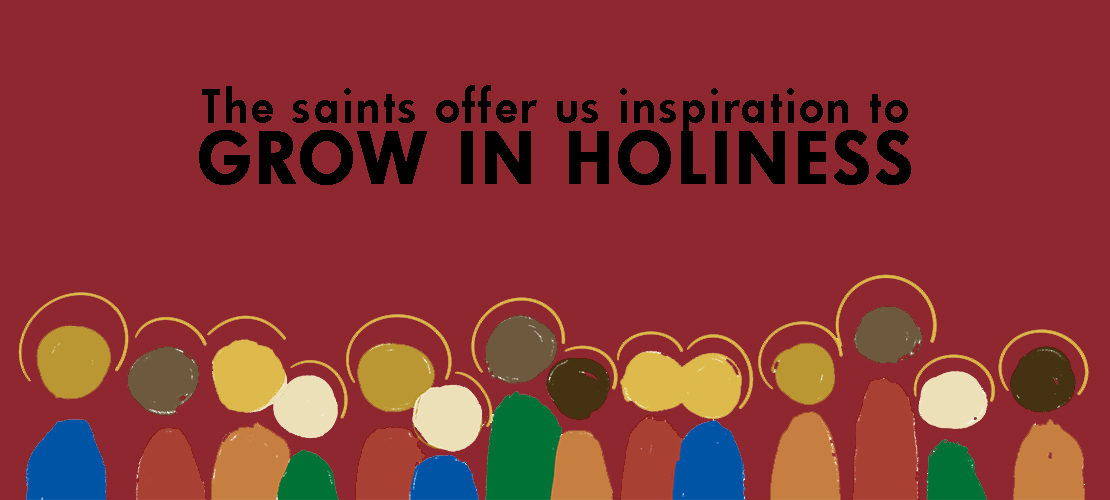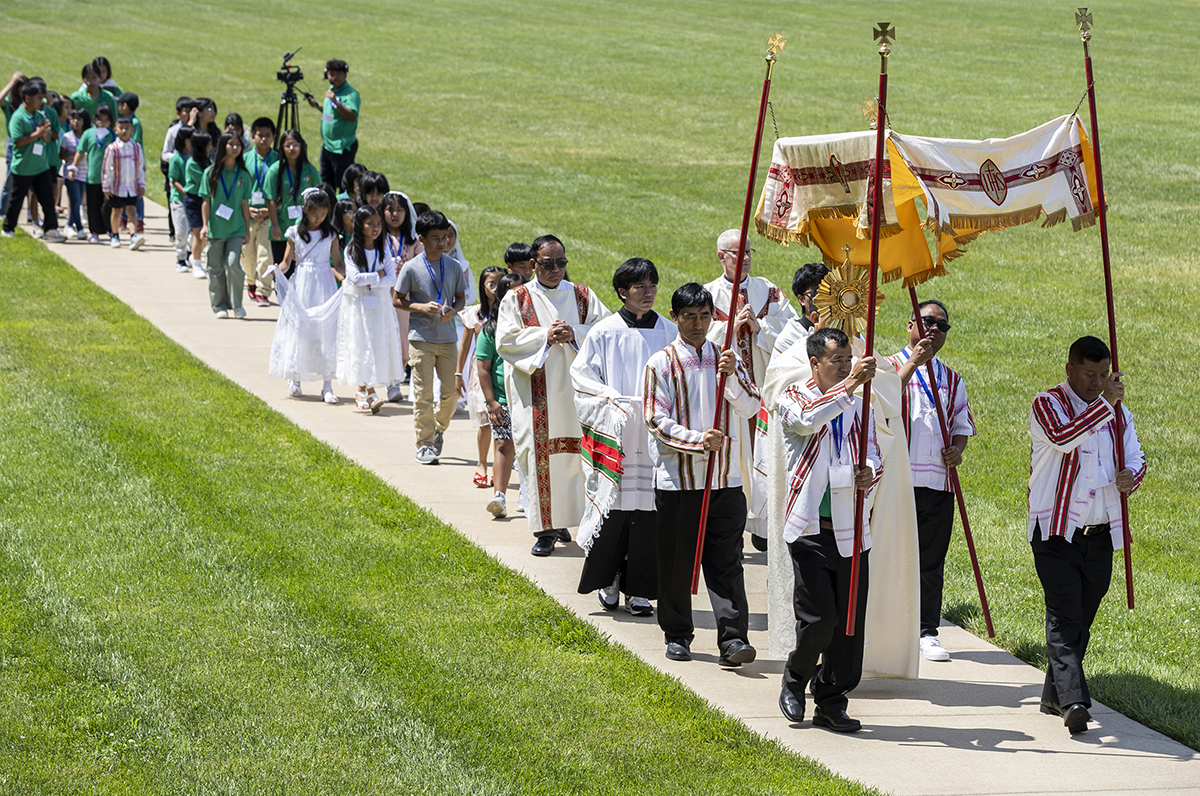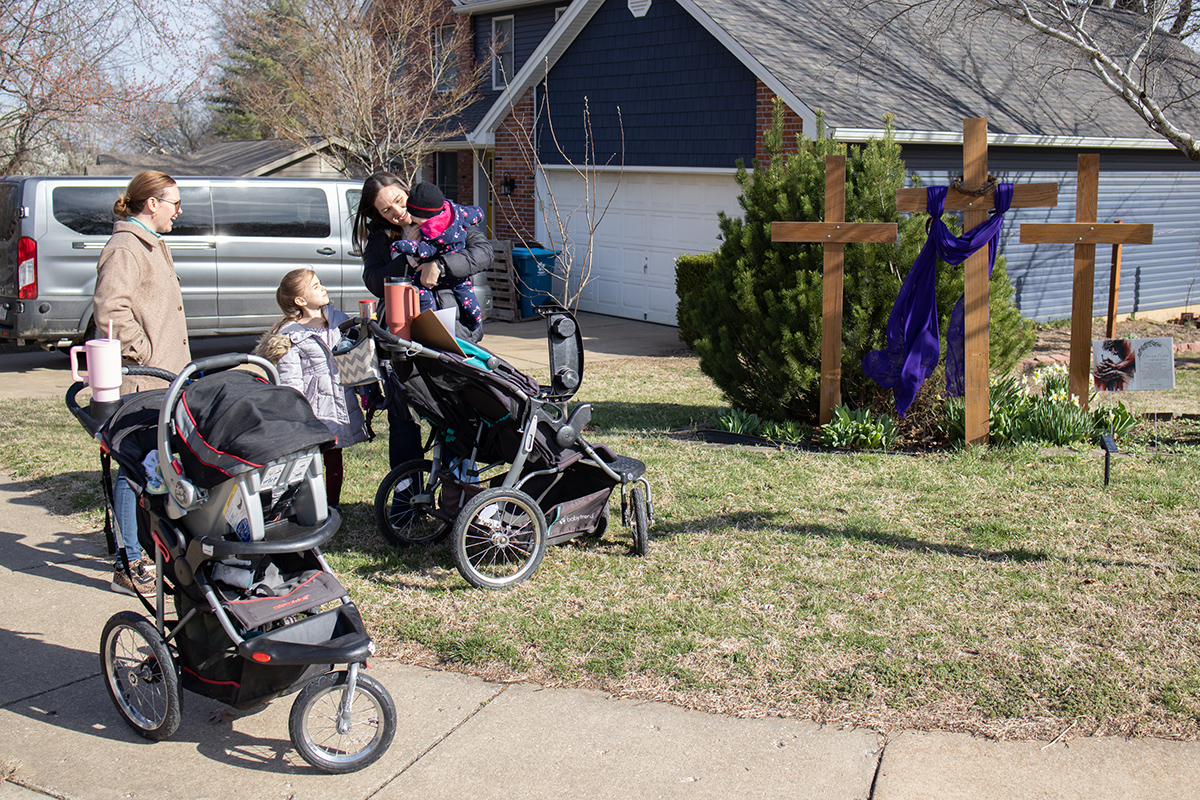Praying for the dead is fundamental to our faith

November is a time to pray for souls, celebrate the saints
The month of November, which starts with the feasts of All Saints Nov. 1 and All Souls Nov. 2, traditionally is a time to pray for the souls of the faithful departed. Praying for the dead is fundamental to our faith.
The tradition of praying for the dead is found in Sacred Scripture. “Therefore, (Judas Maccabeus) made atonement for the dead, that they might be delivered from their sin” (2 Maccabees 12:46). The Church teaches that praying for the dead is intrinsically connected to the three states of the Church: the Church Militant, or the saints on earth; the Church Suffering, or the saints in purgatory; and the Church Triumphant, known as the saints in heaven. In addition to prayers, it is recommended to participate in almsgiving, indulgences and works of penance on behalf of the deceased.
Because we don’t know exactly who has made it to heaven after death (with the exception of those who have been beatified or canonized), it’s important that Catholics pray for everyone who has died, that they might be soon united with God in His Kingdom.
The Church teaches that purgatory is a time of purification for those who “die in God’s grace and friendship.” According to the Catechism of the Catholic Church, “after death (the faithful) undergo purification, so as to achieve the holiness necessary to enter the joy of heaven” (1030-32). This is why we have prayers for the souls in purgatory — because they cannot pray for themselves.
Praying for the deceased also is a reminder of our own mortality. One day, we all will die, and this life on earth is but a transition. Our lives will change, but they will not end. We will have eternal life with God if we remain united with Him in faith.
All Saints Day
The Solemnity of All Saints, Nov. 1, is an opportunity to study, learn from, and celebrate the saints.
Some are obscure saints — men and women of every time, place and culture. All provide a lesson and teach by their obscurity that you don’t have to be famous to be holy.
The Solemnity of All Saints, which this year falls on a Sunday, pays homage to the women and men officially recognized by the Catholic Church for their holiness. They inspire us to grow in holiness to join them one day in heaven. Whether prominent or obscure, saints are ready, willing and able to help us on life’s journey. All we need to do is ask them to pray for us.
Quoting from “Popular Devotional Practices,” the U.S. Conference of Catholic Bishops states that through their prayers of intercession, the saints in heaven play an integral role in the life of the Church on earth. “For after they have been received into their heavenly home and are present to the Lord, through Him and with Him and in Him they do not cease to intercede with the Father for us, showing forth the merits which they won on earth through the one Mediator between God and man.” The saints, the members of the Church who have arrived at perfect union with Christ, join their wills to the will of God in praying for those in the Church who are still on their pilgrimage of faith.
By practicing love of the saints we strengthen the unity of the entire Body of Christ in the Spirit. This in turn brings us all closer to Christ.
Pope Francis, writing in “Gaudete et Exsultate” (“Rejoice and Be Glad”), stated that the Lord “wants us to be saints and not to settle for a bland and mediocre existence.” Following Christ, or the path to holiness, is a way of life. The pope cited the lives of St. Francis of Assisi, St. Vincent de Paul, St. Teresa of Calcutta and many others for whom “mental prayer, the love of God and the reading of the Gospel in no way detracted from their passionate and effective commitment to their neighbors.”
The Catechism of the Catholic Church refers to them as “witnesses who have preceded us into the kingdom,” who share the living tradition of prayer by the example of their lives, their writing and their prayer today (2683).
Those who die in God’s grace and friendship and are perfectly purified live for ever with Christ. They are like God for ever, for they “see him as he is,” face to face:
By virtue of our apostolic authority, we define the following: According to the general disposition of God, the souls of all the saints . . . and other faithful who died after receiving Christ’s holy Baptism (provided they were not in need of purification when they died, . . . or, if they then did need or will need some purification, when they have been purified after death, . . .) already before they take up their bodies again and before the general judgment — and this since the Ascension of our Lord and Savior Jesus Christ into heaven — have been, are and will be in heaven, in the heavenly Kingdom and celestial paradise with Christ, joined to the company of the holy angels. Since the Passion and death of our Lord Jesus Christ, these souls have seen and do see the divine essence with an intuitive vision, and even face to face, without the mediation of any creature.
This perfect life with the Most Holy Trinity — this communion of life and love with the Trinity, with the Virgin Mary, the angels and all the blessed — is called “heaven.” Heaven is the ultimate end and fulfillment of the deepest human longings, the state of supreme, definitive happiness.
CCC 1023-1024
The month of November, which starts with the feasts of All Saints Nov. 1 and All Souls Nov. 2, traditionally is a time to pray for the souls of the … Praying for the dead is fundamental to our faith
Subscribe to Read All St. Louis Review Stories
All readers receive 5 stories to read free per month. After that, readers will need to be logged in.
If you are currently receive the St. Louis Review at your home or office, please send your name and address (and subscriber id if you know it) to subscriptions@stlouisreview.com to get your login information.
If you are not currently a subscriber to the St. Louis Review, please contact subscriptions@stlouisreview.com for information on how to subscribe.







